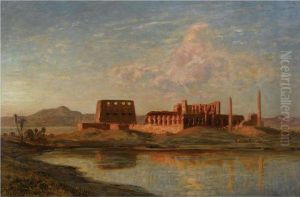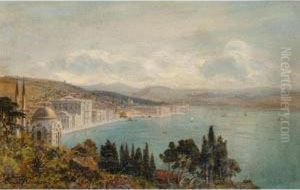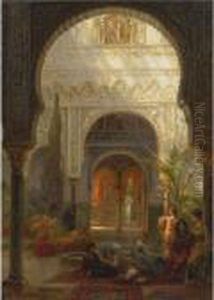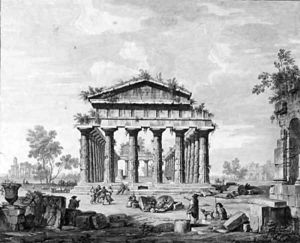





The Temple Of Karnak At Luxor
-
About Reproduction
Discover the allure of art with our faithful reproduction of "The Temple Of Karnak At Luxor", originally brought to life by the talented Ernst Carl Eugen Koerner. Unlike posters or prints, our hand-painted oil painting breathes an unique sense of depth and texture into your space. Every detail, every stroke, and every texture is meticulously recreated, paying the perfect homage to Ernst Carl Eugen Koerner and his artistic vision.
Owning this piece is more than just decoration - it's a statement of your refined taste in art. Let the vibrant colors and intricate details of this replica serve as a daily reminder of the beauty in our world. Elevate your decor and appreciate the richness of art with our replica of this masterpiece.
-
Painting Description
"The Temple of Karnak at Luxor" is a painting by Ernst Carl Eugen Koerner, a German Orientalist painter known for his detailed and atmospheric depictions of Middle Eastern architecture and landscapes. Born in Berlin in 1846, Koerner was a prominent figure in the Orientalist art movement, which gained popularity in the 19th century among European artists fascinated by the exoticism of the East.
Koerner's work, "The Temple of Karnak at Luxor," captures the grandeur and decay of the ancient Egyptian temple complex, one of the largest religious buildings in the world. The painting is characterized by its meticulous attention to architectural detail and the interplay of light and shadow, which was a hallmark of Koerner's style. He often portrayed the monumental ruins set against the backdrop of a clear, expansive sky, evoking a sense of timelessness and the enduring legacy of ancient civilizations.
While the exact date of the painting's creation is not well-documented, it is likely from the late 19th or early 20th century, a period when Koerner produced many of his major works. The Temple of Karnak, with its massive columns and sanctuaries, provided a rich subject for Koerner's artistic exploration, allowing him to showcase his skill in rendering complex stone textures and the effects of natural light on ancient structures.
As with many of Koerner's paintings, "The Temple of Karnak at Luxor" would have been based on the artist's own travels and studies in Egypt, where he joined a tradition of European artists seeking inspiration from the region's rich history and culture. The work reflects the period's fascination with Egyptology and the broader European engagement with the Orient, which was often imbued with romanticized and sometimes imperialistic overtones.
"The Temple of Karnak at Luxor" by Ernst Carl Eugen Koerner is a significant contribution to the Orientalist genre, offering viewers a glimpse into the artist's interpretation of the Middle East's architectural heritage. It remains an important work for understanding the cultural and artistic exchanges between Europe and the Middle East during the 19th and early 20th centuries.
-
Lead Time & Shipping
When you order this oil painting replica, it typically takes 2-3 weeks to paint. If the artwork is more complex, it might need a little more time to ensure the best quality. Once it's ready, we'll send you a photo for your approval. After you give the green light, we'll ship it to you for free.
-
Return & Refund
We believe in the quality of our hand-painted oil painting reproductions, and your satisfaction is our priority. If for any reason, you are not completely satisfied with your purchase, we offer a 45-day return policy. You can return your artwork within 45 days of receipt and receive a full refund. Please note that the artwork must be returned in the original packaging and in the same condition as it was received.




















